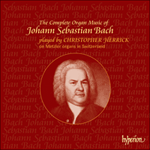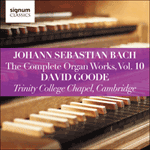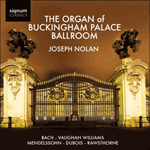
Welcome to Hyperion Records, a British classical label devoted to presenting high-quality recordings of music of all styles and from all periods from the twelfth century to the twenty-first.
Hyperion offers both CDs, and downloads in a number of formats. The site is also available in several languages.
Please use the dropdown buttons to set your preferred options, or use the checkbox to accept the defaults.
from notes by Ateş Orga © 2007
 Bach: Organ Music Bach: Organ MusicThe Gottfried Silbermann organ of Freiberg cathedral, built during Bach’s lifetime, is the instrument on which David Goode performs his grand selection of some of Bach’s best organ works—including the famed Passacaglia and Fugue in C minor—providi ...» More |
 Bach: The Complete Organ Works Bach: The Complete Organ Works‘Let me say without hesitation that Herrick’s performances are models of clarity, accuracy, precision and musicality … this is a complete Bach th ... ‘Herrick is one of the few organists who does justice to these difficult, elusive pieces … What a singular joy to hear the organ played with such ...» More |
 Bach: The Complete Organ Works, Vol. 10 Bach: The Complete Organ Works, Vol. 10From the sepulchral opening tones of the great C minor Fantasia through to the towering Passacaglia in the same key, David Goode's latest Bach instalment is a joy.» More |
 The Organ of Buckingham Palace Ballroom The Organ of Buckingham Palace BallroomFollowing the success of Joseph Nolan’s appearance in Music for the Coronation of James II, he returns to Signum with a solo disc of organ music, capturing music from some of the finest composers of the instrument.» More |

